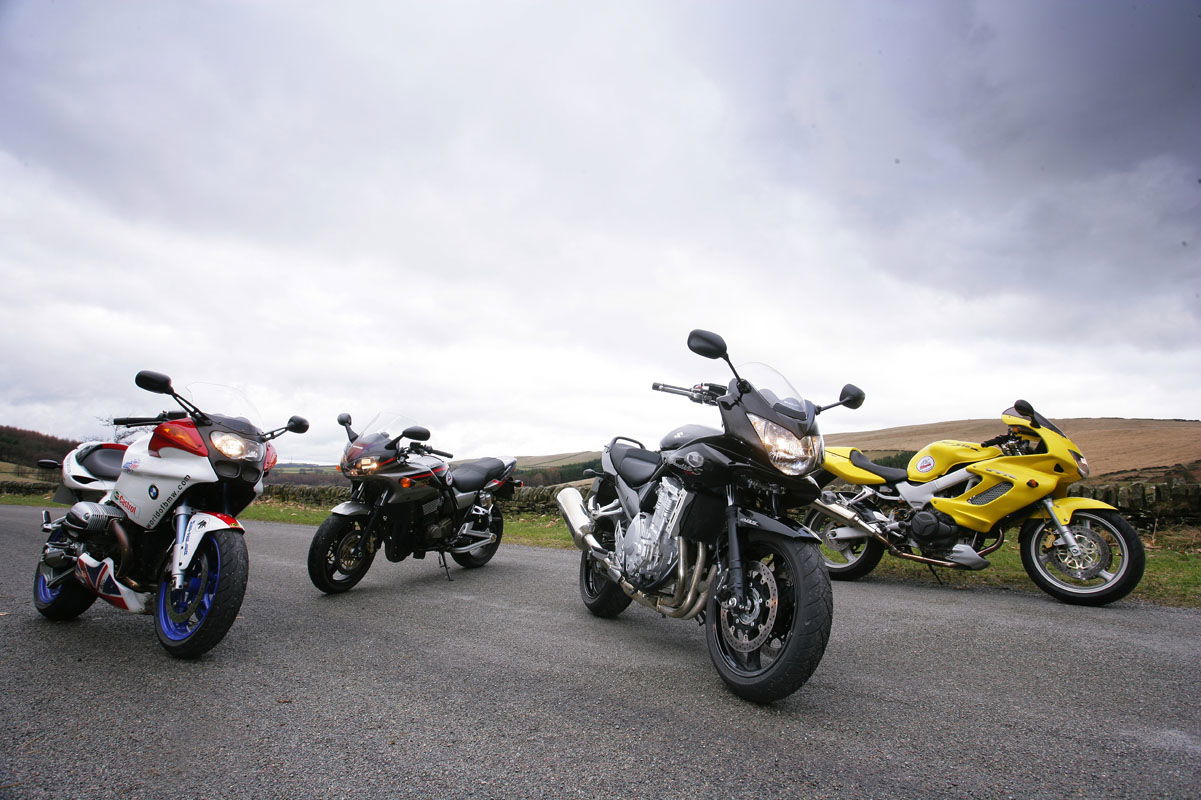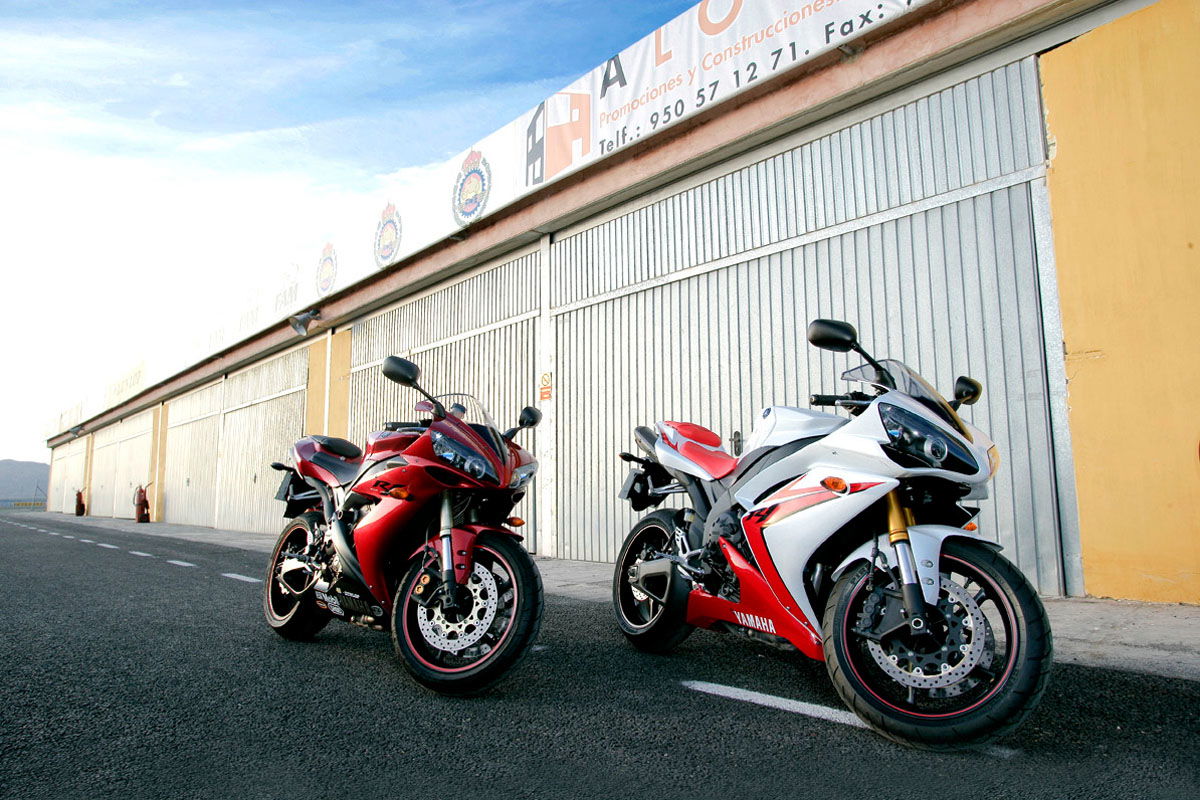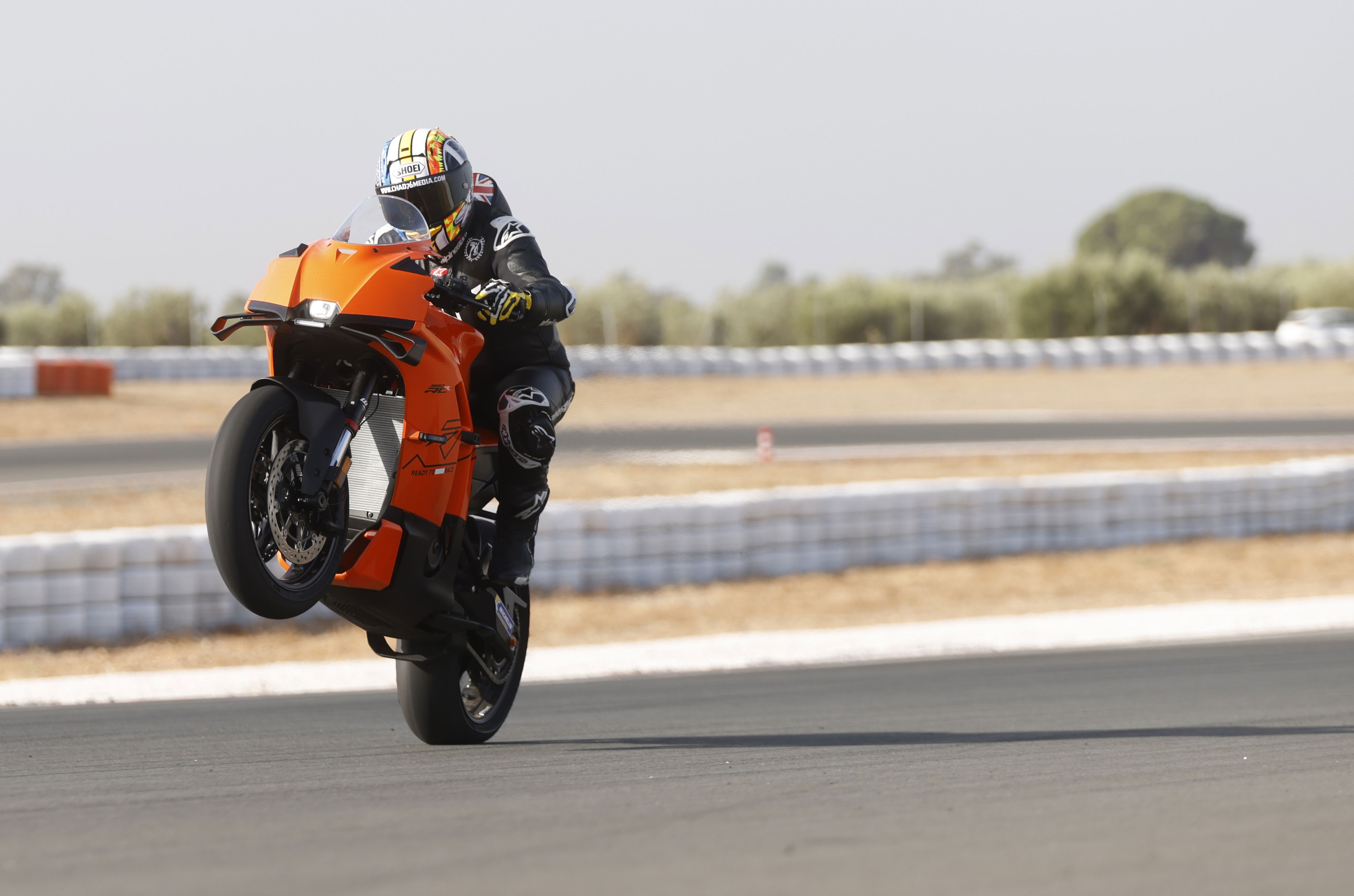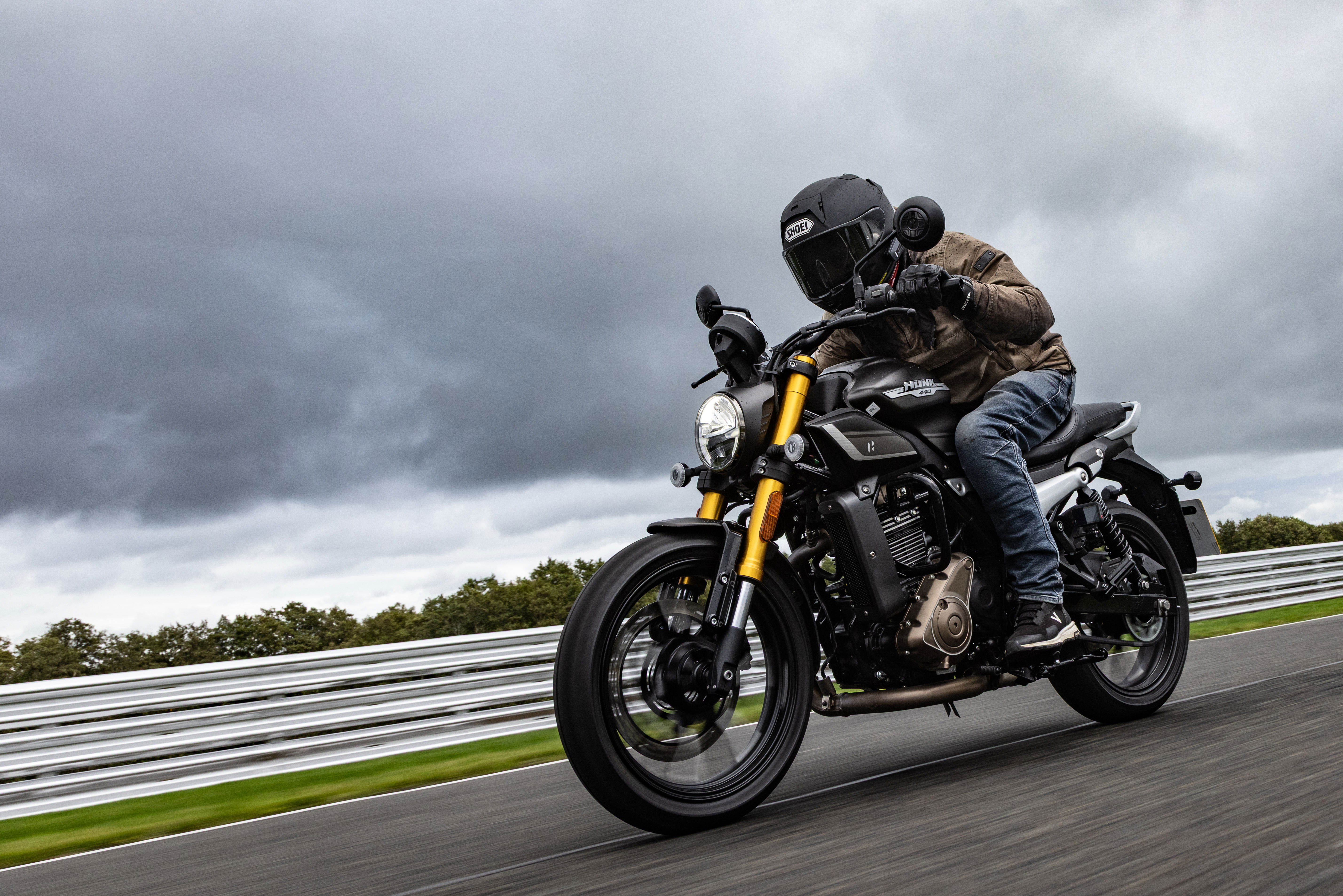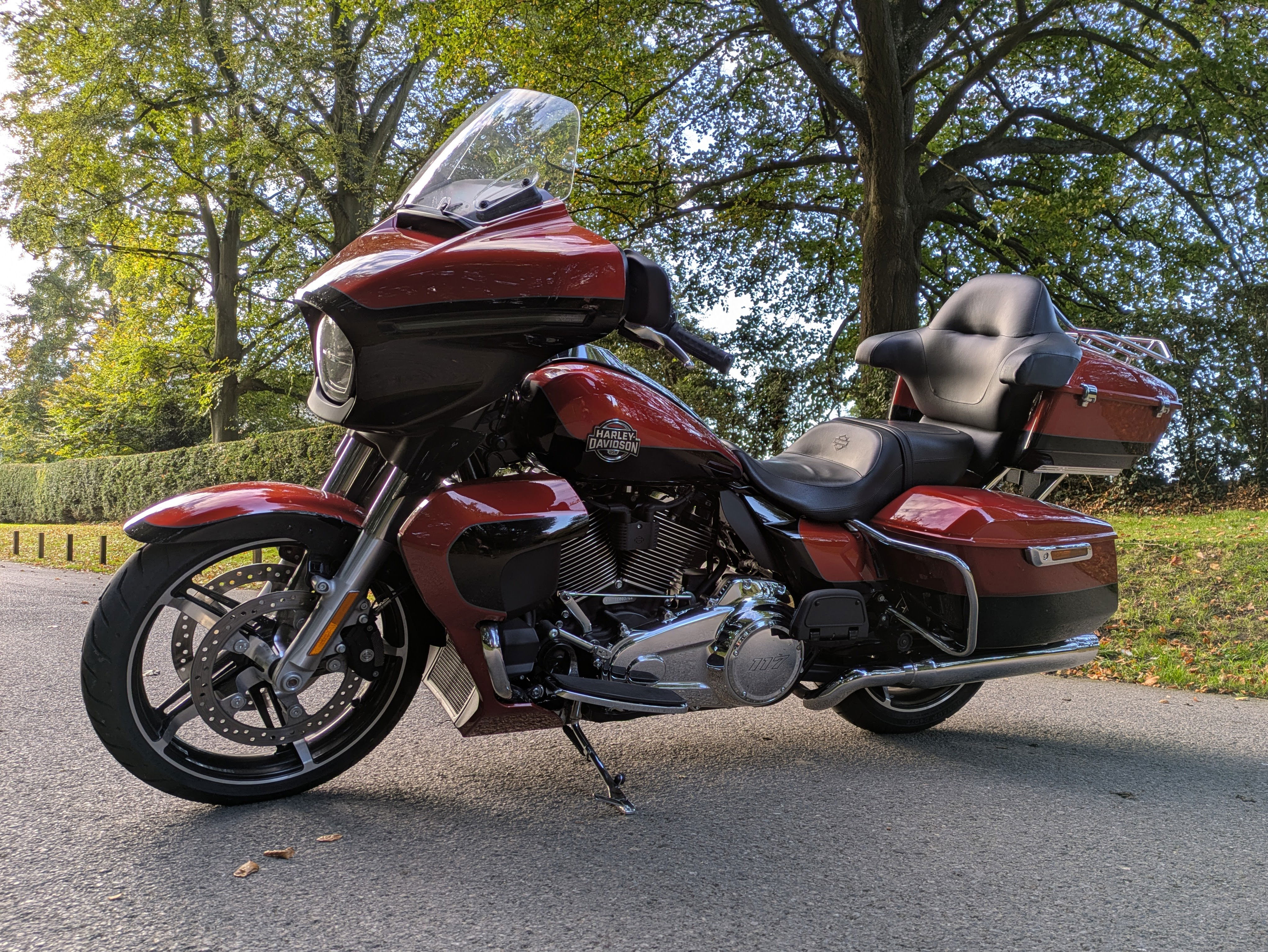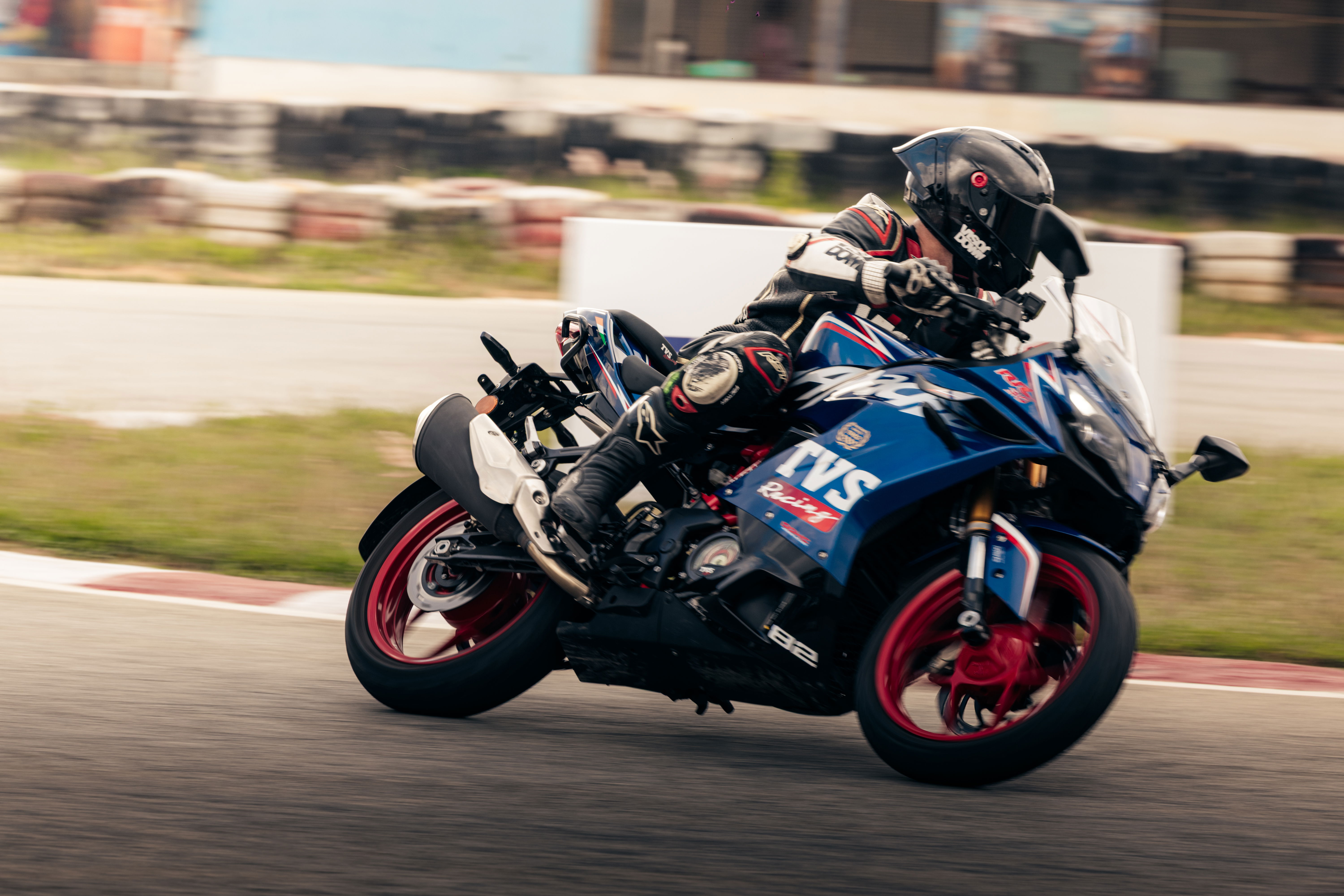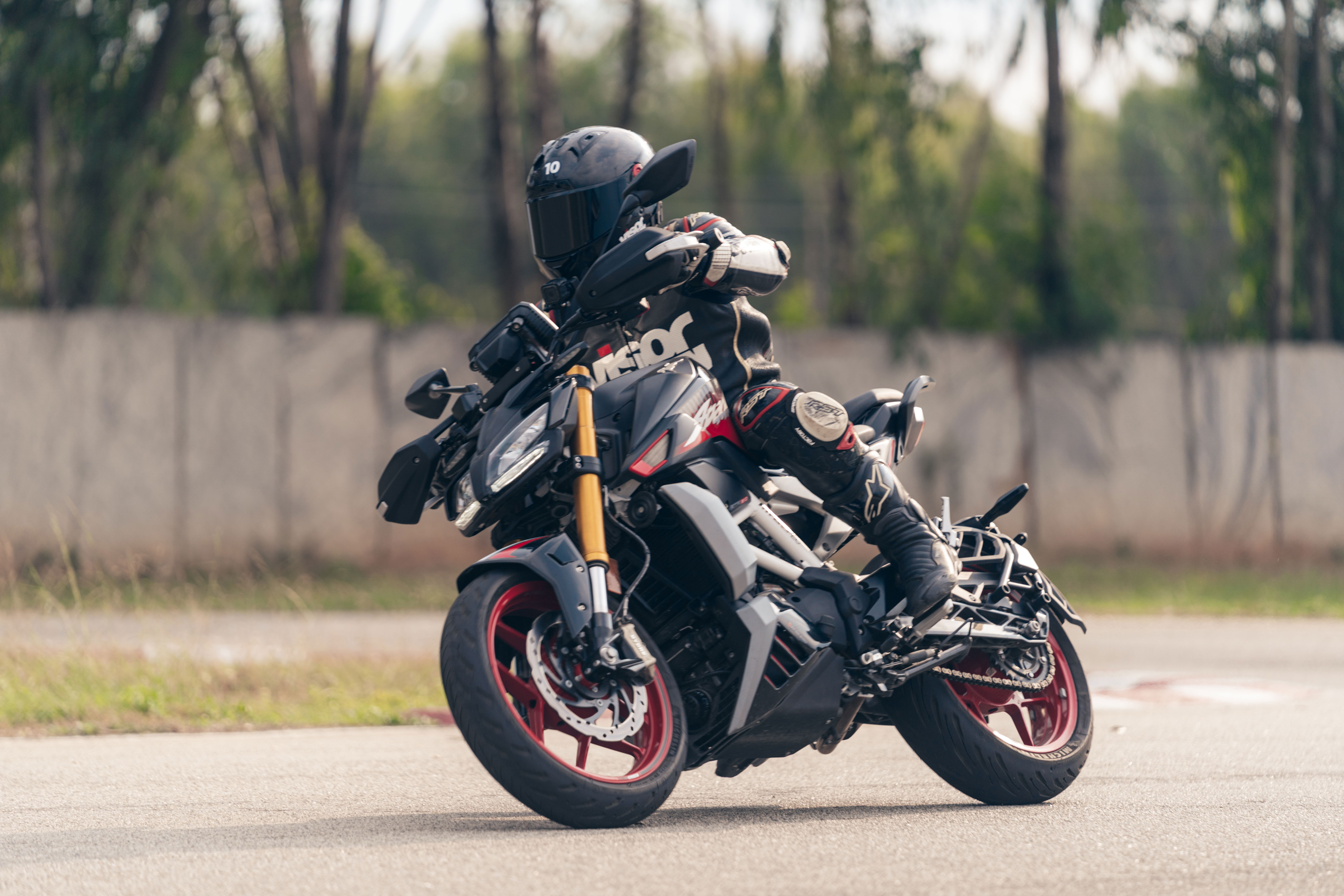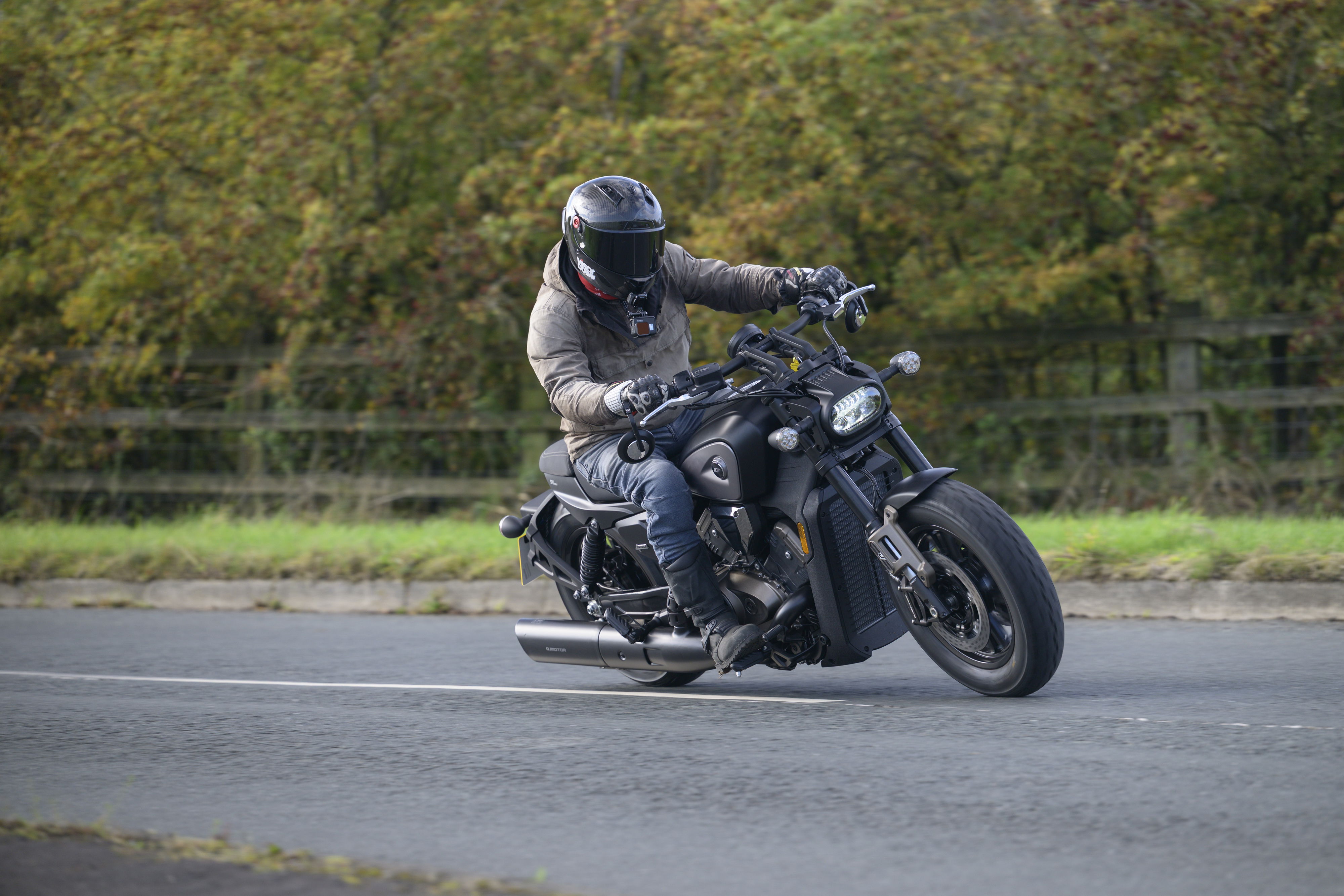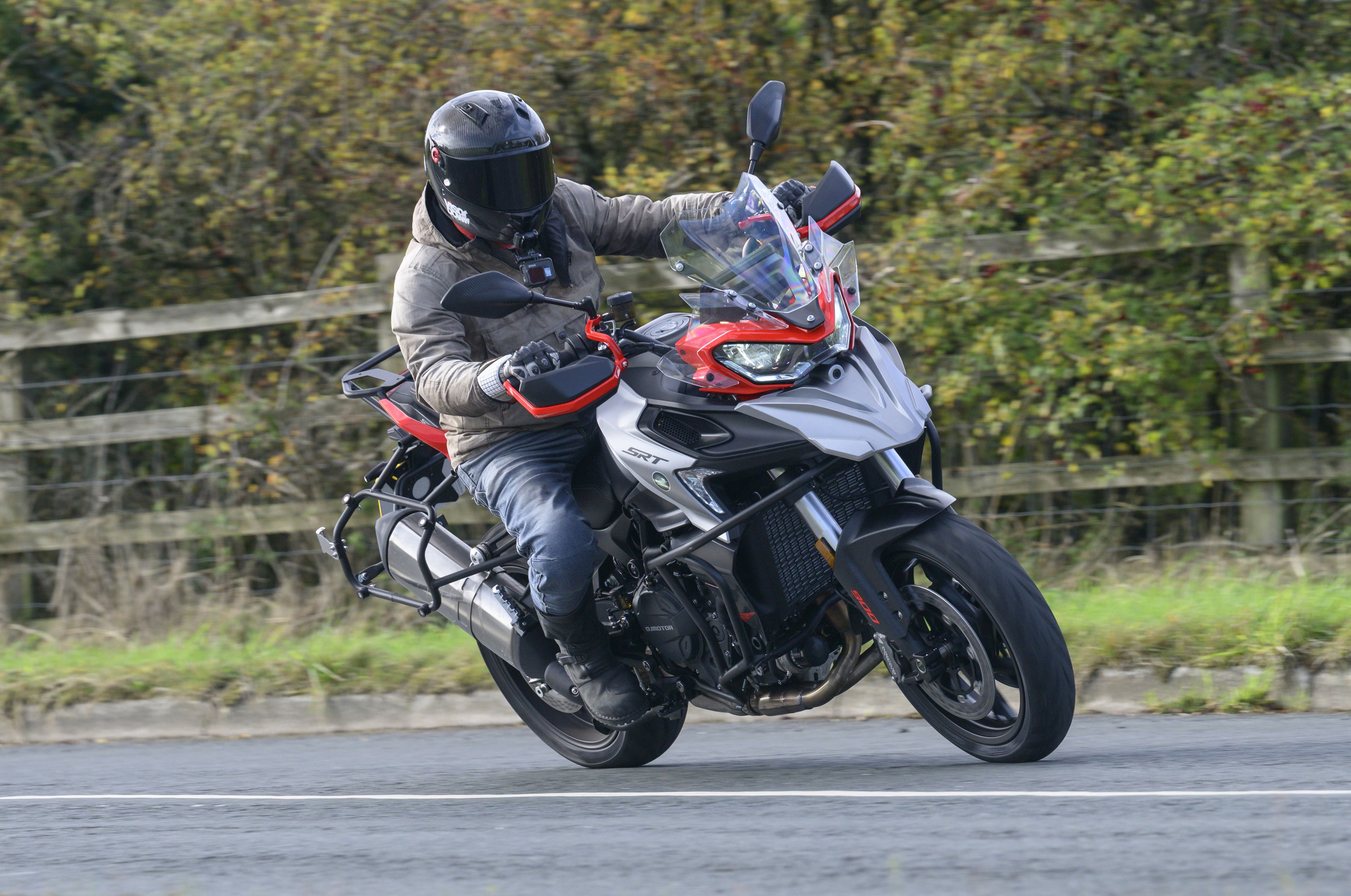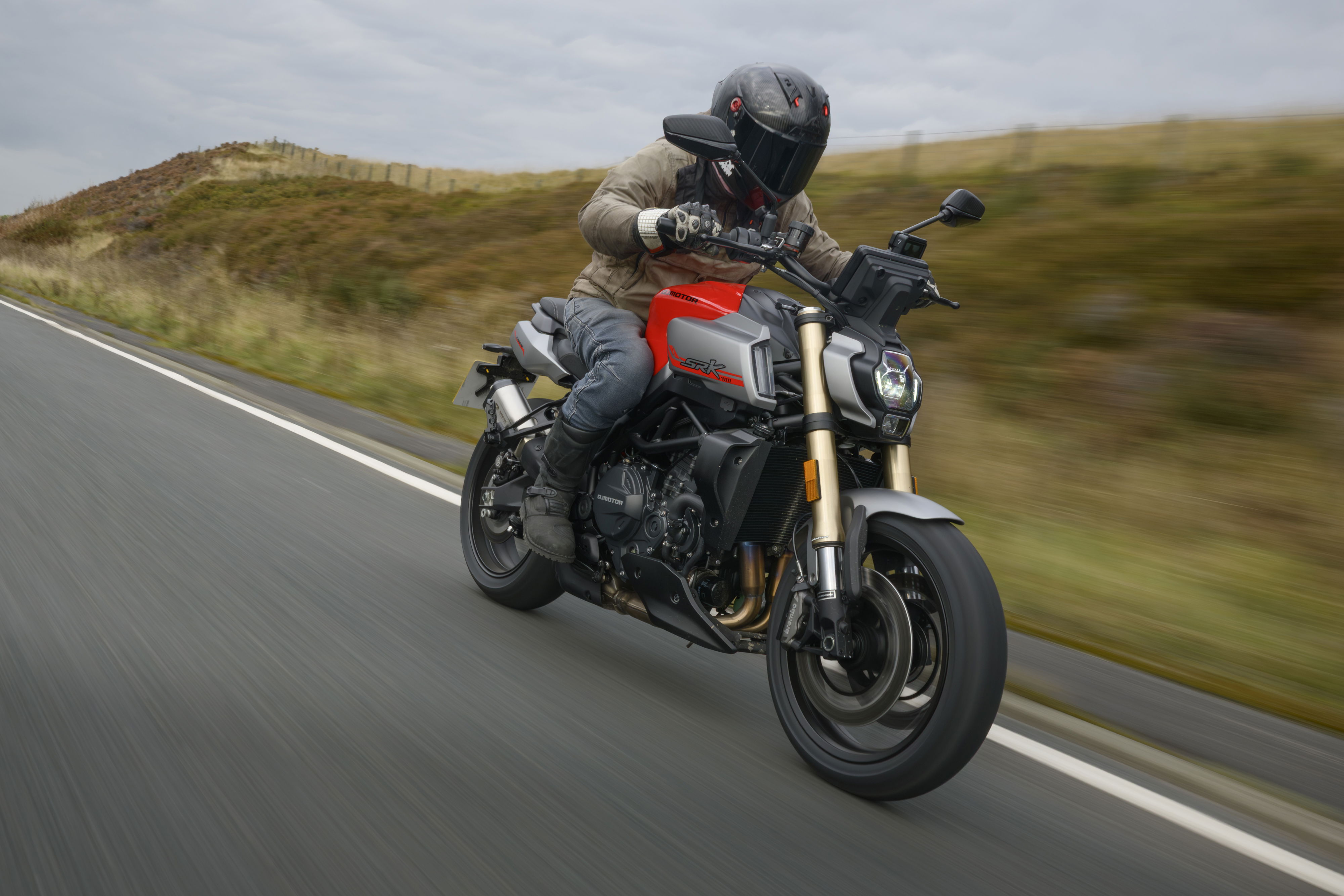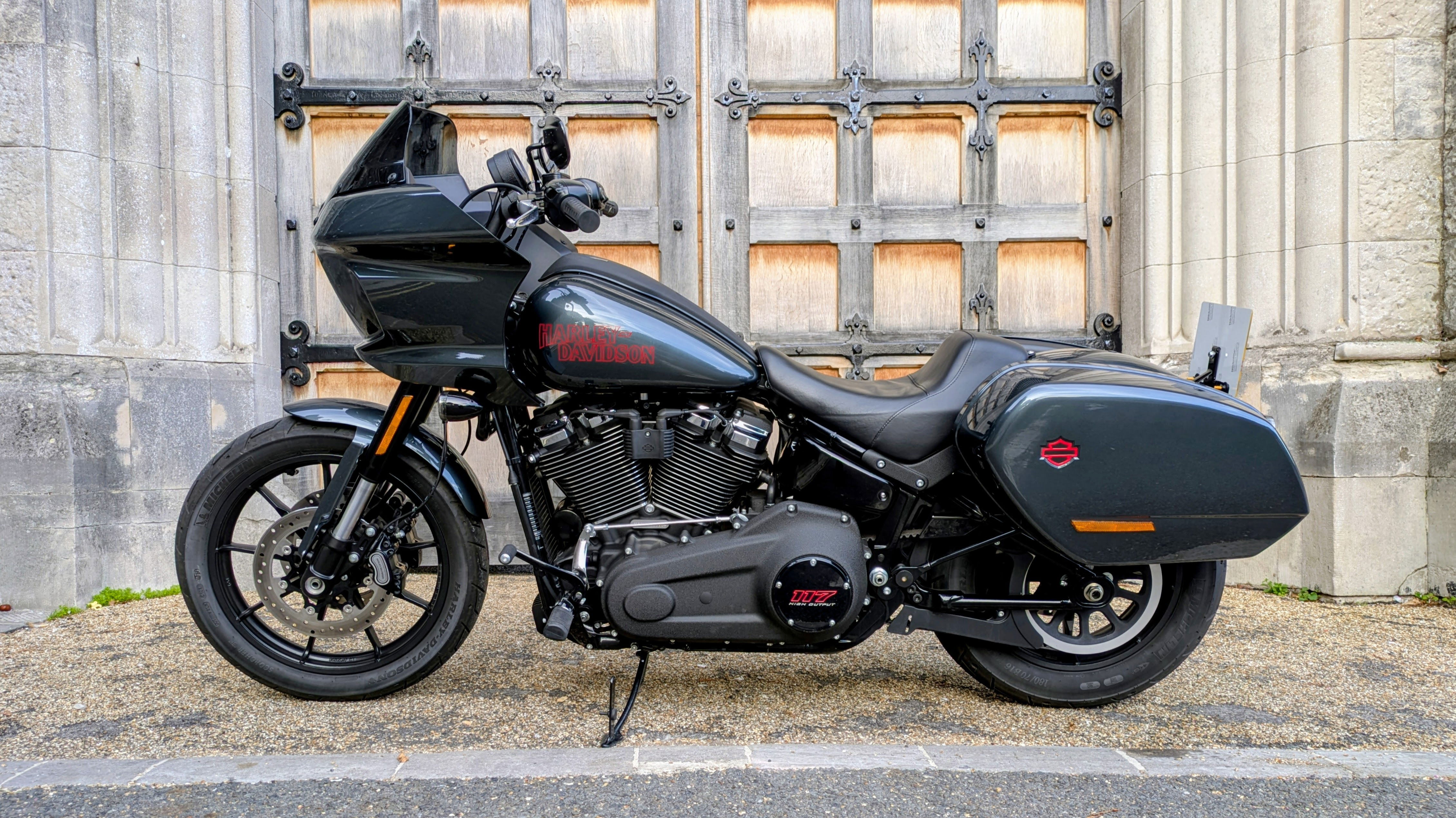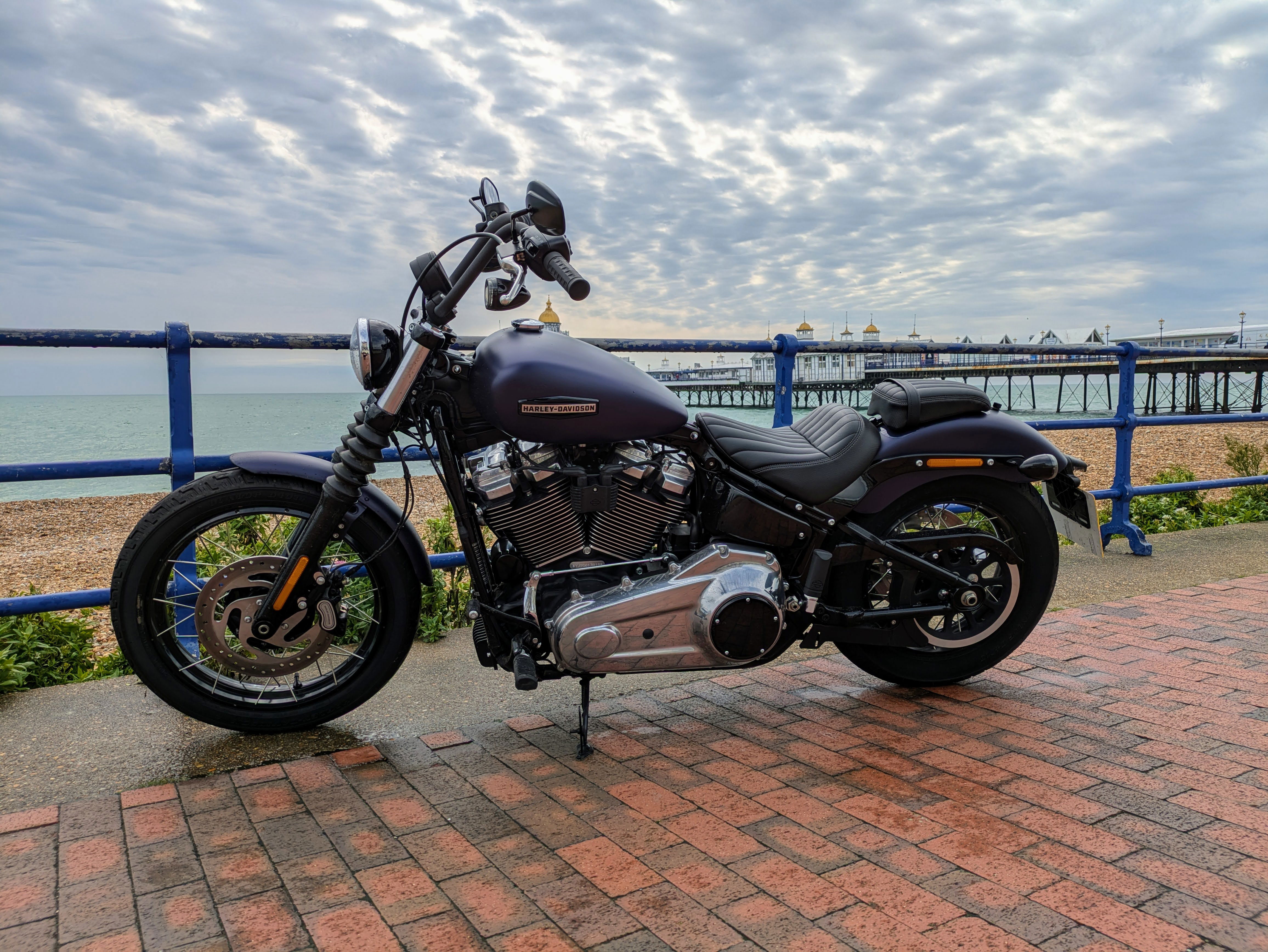Road Test: 2007 600 Supersport review
Have the latest sports 600s taken track focus to a level where it has limited their viability as road bikes? It certainly looks that way, but then looks can be deceiving...

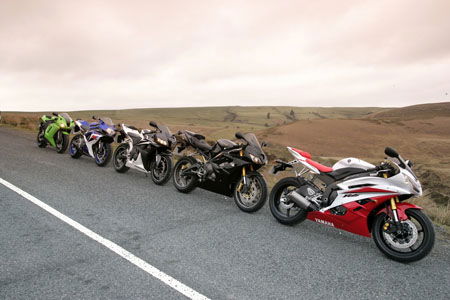 |
So what do you want in your sports 600? Do you want a track day missile, focused, sharp, rev-hungry and aggressive? Or a sporty road bike with useful midrange that can cut it on track if the mood takes? This year has seen a definite split in the Japanese 600 supersport camps. Honda, Suzuki, Yamaha and Kawasaki have staked their claim on what they think buyers want and where the market is going.
On one side of the fence you have Suzuki and Honda. There's no doubting either's sporting influence, but in their latest generation of sports 600 both have concentrated on a specific area of their engine's performance, namely midrange and low-down power.
Last year Suzuki launched its new and improved GSX-R600 with bigger throttle bodies and lightweight engine components, all aimed at giving the engine more grunt. This year Honda has chosen a similar path with its latest version of the CBR600RR.
Since its introduction in 2003 the RR has come under fire for its lack of midrange. The most sporty CBR ever cut it on track, but only as long as you were prepared to bury the tacho needle. Not so for 2007. Lighter pistons and conrods and a bigger airbox give the CBR a much needed midrange boost.
On the other side of the fence Kawasaki and Yamaha have decided the best way to tempt riders is to make their 600s as track focused as possible, which means sky-high rev limits and peak bhp concentrated way up the rev range. At its launch, the designer of the ZX-6R admitted theirs wasn't aimed at road riders, and was instead targeting track day enthusiasts and racers, hence the move back to a 599cc. Thanks to a brand new motor, the power and torque is almost the same as the 636cc engine, he claimed - it was just located a bit closer to the 16,500rpm limit.
Speaking of rev limits, anyone remember Yamaha's claims of a 17,500rpm rev limit when the current R6 was launched last year? That was brushed under the carpet when the rev counter was found to be a bit on the optimistic side. Never mind that, the sales pitch is still the same: 'no compromise' track performance, on the road.
So there you have it. One side of the fence with an eye on the road and a thought of the track; the other with track focus and a nod to the road.
But there's one more sports 600 (of sorts) that's sat firmly on the fence. Triumph's 675 is Hinckley's sportiest yet, but with a 675cc three-cylinder motor it offers something very different to the Japanese inline fours. The triple gives much more midrange at the expense of outright top end performance, but with its oddball capacity is the Triumph track or road focused? Handling and styling say track, engine says road.
So with all this in mind the only way to test the latest generation of sports 600s was to ride them in every environment. As well as letting Niall do what Niall does best and thrash them round a track, we took them to Wales for a ride on some of the UK's best bends then finally used them every day as commuters, battling rush hour traffic and the congested motorways of London and the south east to see how they fared in the real world. Will any of the five straddle the boundaries of performance and usefulness, or is the sports 600 class now so specialised that your choice of bike is governed by the type of riding you do? Ooh, let's find out.
ON THE ROAD
Even if you've bought your new 600 for track days the chances are that you will venture out on the public highways every now and then. But what should be a pleasant ride out can easily turn into a war of attrition, fighting the bike's limitations rather than enjoying its strengths.
The thing with road riding rather than track work is that you aren't flat out the whole time, even if the roads are as good as those in Wales. Speed limits, other traffic, unfamiliar roads with blind crests and surface dirt all combine to ruin your flow, which means a user-friendly bike with a flexible engine is always going to shine through. Which is exactly what Honda's new CBR600RR did.
Despite being visually similar to last year's model, the difference in the engine between that bike and the new CBR is stunning. Gone is the old peaky revvy motor, replaced by something that feels every bit as strong as a 750 in the low rev range with a very linear power delivery. On top of that Honda has made a series of small but significant changes to the RR, turning what was the most extreme race rep 600 into what is now the most user friendly.
Although the riding position is still very much CBR-RR, with the feeling of being perched above the bike, Honda has moved the seat back 15mm and raised the bars 10mm. Small changes maybe, but the CBR now feels more roomy and is considerably easier for taller riders to move around on.
The handling is still very much track focused, but in much the same way that it did with its Fireblade Honda has added a calming touch to the CBR. Hidden below the top yoke is one of Honda's neat HESD electronic steering dampers, while the new fuel injection uses a clever trick of bleeding a small amount of air into the inlet port on a closed throttle in an attempt to limit throttle snatch.
On the go all of these changes combine together to make riding the CBR a joy. Despite a range of sizes from Diddy Daryll through racer-sized Niall and up to Super Size me, none of us found the riding position uncomfortable, but what impressed the most was the engine. For simple, hassle-free, riding without having to worry about shifting down every time you need pass another vehicle the CBR rules. There will be the complaints from some quarters that this new motor lacks the kick in the power delivery that is usually associated with a sports 600, but we all reckoned that the CBR still cuts it.
The beauty of the new motor is the smoothness in the power build up. From pull-away to the limiter the CBR just drives, in a very un-600-like way. Niall reckoned the motor felt like a 750, which isn't an over exaggeration. If you hold the throttle open in first the power builds strongly before gently lifting the front when the torque hits its peak at around 8000rpm. Try that on last year's bike, or the R6 for that matter.
Yamaha has made no secret of the fact the R6 is a track-orientated bike, which is always going to limit its ability on the road. What your track day rider or racer wants in a 600 is different to a road user. For instance a road rider probably doesn't really want the R6's crouched over the front riding position, but a racer would. On the road the riding position is almost comfortable, but not quite. The bars are set quite splayed and feel quite wide, which is nice, but your whole body is positioned well forward on the bike, almost in a motocross-ish over the front stance. Initially this feels good, but after a sustained road ride it puts a lot of pressure on your wrists.
The R6's chassis is pure track bike. The taught, stiff set-up transmits every bump to the rider so they can push the bike and tyres to the limit. On the road this means you can assess every pothole through your now aching wrists. It's not that the suspension is harsh, it's just stiff for track use, like the engine.
To get the most out of the R6's motor you have to get it spinning, which isn't something you necessarily want to do all the time on the road. Although Yamaha's semi-fly-by-wire throttle makes the R6 fuel almost perfectly, which is very impressive, it can't fill a hole in the lower midrange. Accelerating at low revs on the R6 feels like you are waiting for something to happen, which you are, - waiting for the power to come in! It isn't until the needle is over 8000rpm that the motor starts to get into its stride and really 11,000rpm before it's flying. Nonetheless it's very impressive. The slipper clutch is good, the gearbox really slick and there is power.
If you are prepared to put in some effort the R6 is rewarding to ride, but do you really want to do that? Especially on the road? Putting effort in involves the speedo being in the high numbers, even on a 600, which is fine when the road, traffic and your own ability allows, but for when you just want to get home? We wanted to like the R6 because of its stunning looks - it's a year old and is still the best looking 600 - but as a road bike the Yamaha is almost too extreme to fully enjoy.
Which is where Suzuki's GSX-R600 scores. The GSX-R600 has historically had the reputation as the loony of the 600s class. When Honda was still making the CBR with pillion grab-rails, Suzuki was busy making the GSX-R as aggressive, revvy and track focused as possible. How things change. In its 2006 update Suzuki kept all the good points of the old model, the roomy riding position and sharp handling, but added an even gruntier motor.
Accelerating on the GSX-R isn't just about the smooth build up of speed, it's also an aural treat. There has long been a running battle between Kawasaki and Suzuki over who can get an airbox to make the most noise, and currently Suzuki leads the way with the GSX-R. Sod 98dB exhaust limits, this bike's airbox trumps that easily. But it's not all show and no go.
Having spent last year and over 9000 miles on a GSX-R600, I have to say I love this engine. It really doesn't feel like a 600 at all. On cold, wet evenings, where all you want to do is get home, the GSX-R is more than happy to chug along. It has stacks of low down power and doesn't need to be continuously kept on the boil. Which is a good thing because, surprisingly for Suzuki, the gearbox isn't fantastic. Some reckon that the addition of a slipper clutch has had the effect of ruining the usually super sweet Suzuki box. It's still precise with no false neutrals, just more solid in its movement.
Wet evening over and the GSX-R shows its alter ego. As well as low-down grunt the GSX-R has a hell of a top end. Get the motor really screaming and it is seriously fast, but still keeps its composure. Everything feels really well balanced on the Suzuki. The brakes, suspension and chassis all feel to be in perfect unison and while no one aspect is particularly outstanding, they are all very nicely balanced. Where on the Kawasaki the brakes can feel a little sharp, the Suzuki's just feel right. And so does the riding position.
Suzuki has obviously thought about road riders with the GSX-R, with a clear speedo, big rev counter and decent gear indicator, and a riding position that is excellent. Although it isn't a big bike the Suzuki feels roomy, so is great for long distances, and even though the engine sounds raw it doesn't really vibrate much at motorway speeds. Yes, the GSX-R is a very easy bike to live with day-to-day, not what you would expect to hear about a GSX-R and certainly not what you can say about Kawasaki's new ZX-6R.
First things first with the ZX-6R. Kawasaki is more than happy to admit this bike is predominantly aimed at track day riders and racers. Yes, it's also a road bike, but its focus is definitely on track success. Has it achieved this goal? Well, read Niall's assessment later in this feature, but for now let's concentrate on its road ability, which to be fair isn't that good.
In the same way that the R6 is harsh, unforgiving and sensitive on the road due to its track focus, the ZX-6R is also hard work to ride. The first thing you notice is the riding position. Initially it seems fairly comfortable as it's physically quite a big bike, but then the seat starts to attack you. Neither Niall, Daryll nor myself could actually find a way of sitting comfortably on the ZX-6R. If you sit forward the seat seems more comfortable but the riding position is then cramped up. Sit back and the seat, as well as having virtually no padding, is sculpted so the edges cut into your bum and sit in between - it just feels unnatural. Very odd.
Then there is the motor. The ZX-6R's engine is a bit of an enigma. It feels like is has stacks of power, but often leaves you waiting for it to kick in. Like the R6, the ZX-6R is a bit of a rev monster, but the Kawasaki certainly has more grunt low down. Before it gets to 8000rpm there isn't a hell of a lot happening but once past this figure the revs pick up fast. Crack the throttle open and the ZX-6R seems to pause and struggle to get going, which suggests a lack of torque in the mid-range. John Hogan rode it and said it felt like you were filling the airbox rather than actually getting the fuel/air into the engine, which is spot on. Where the CBR and GSX-R will accelerate the ZX-6R seems to pause slightly before getting going, something the old 636cc engine never did.
But comparing the old motor to this new one isn't fair - they are completely different animals. The new motor is designed to be a perfect platform for racers to develop or track days nuts to thrash. Which is why the gearbox is fantastically slick, the slipper clutch excellent and it comes with a gear indicator and lap timer as standard. Rev the ZX-6R, treat the road like a track and it is stunning and very fast but, again, do you really want to ride like this on the way to the office? On the road the ZX-6R feels like it is out of its natural environment, a caged animal that wants to go mental. For certain riders this will almost certainly be a selling point, but for Niall, Daryll and myself on a road ride, it was just too extreme.
Which leaves us with the oddball of the class: Triumph's Daytona 675. Should it be classed as a sports 600 as it's 675cc and a triple? Come on, who really cares? The Triumph is a mid-capacity sports bike that is priced similarly to the Japanese fours. There is some stigma still attached to the Triumph brand as some feel that it isn't sporty, but ride the 675 and that's soon forgotten.
On the road the triple engine not only sounds fantastic, it delivers exactly the kind of power you want with a road bike. There's no searching for midrange or delay as you wait for it to kick in, the triple simply presents it to you wherever you are in the rev range. Back-to-back with the Japanese fours the 675 feels slower, but I'd bet the average rider will find it faster because of the flexible motor. Thankfully this keeps the gear changes to a minimum because the 675's gearbox really is a shocker, something you (unfortunately) come to expect from a modern Triumph.
Having ran a 675 last year as a longtermer Niall is best placed to comment on the riding position and he rates is as one of the most comfortable 600s. Despite feeling mega skinny and with a fairly long stretch to the bars the Triumph isn't actually that uncomfortable to ride. Which is odd. Visually you would place it alongside a medieval torture chair in comfort stakes, but not once you get going on it. A feeling that its suspension certainly contributes to.
Triumph has always been very good at is getting the chassis and suspension balance right for the road. The 675 is still set sporty but the suspension doesn't feel firm like the 600s and does well to absorb a lot of the road's jolts and bumps rather than transfer them to the rider. It's not the most sophisticated set-up out there, and lacks the newest gizmos like high- and low-speed damping adjustment that some of the Japanese have, but is well set up and certainly suits British roads. Which isn't much of a surprise when you think about it! The British roads must provide a good test of a bike's set-up after all.
BACK IN THE REAL WORLD
JON BENTMAN COMMUTES
JB's been commuting on the 600s. Riding from Maidstone to Orpington (and back) each day, about 50 miles all up. He's using the A26 single carriageway, then a bundle of hectic back roads before joining the A20 at Wrotham, slipping past Brands, then onto the A20 motorway for five miles before putt-putting along urban roads for the final three miles to the office. Here's his pick.
"These 600s are so close on the road it's hard to pick a definitive pecking order. Speed over the ground, especially given the weather booked for road testing purposes (wet and freezing), has been impossible to compare. However, what has been surprising is just how enjoyable the 600s have been. The expectation was that for commuting duties these four would be an ordeal, but that was far from the case. No, it's been a terrific week and the highlight of each day has definitely been the ride to and from work. And as it goes I can offer a pecking order- and quite possibly not one that you'd expect.
Fourth is the Honda. Sorry about that. Yes, expected to place either first or second, the Honda for some reason failed to engage this tester. Jon and Niall have been waxing on about the CBR's bottom end and midrange, but that advantage surprisingly didn't make itself felt on these Kentish and London roads. Maybe it's how you ride them. Me, I know 600s need to be wrung, so wring them I do. And so making the CBR fly on these back roads felt to need an extra 20 per cent effort from the rider over the others here. Sure, the chassis felt ultra-accomplished - you could tell when flicking through roundabouts and the way it hooked up on the gas that it's good. Yet on this occasion it didn't feel an exact match either for the motor or the rider. Strange, and at odds with the general consensus, but that was the experience. No doubt it's a belter with another 20bhp and a WSS rider on board, a la Ten Kate. But for these rides? Frustrating.
The R6 places third by barely half a wheel. I loved this bike. It exudes attitude, it looks like sex on wheels and it howls like the proverbial banshee. The motor is adorable, it just keeps on revving. Maybe not powerfully so, but entertainingly at least. The only fly in the soup was the suspension felt too firm for the wet, so the rear skittered across over-banding. But even that was fun. Lovers of LCs, YPVSs and FZR600s of old will love the R6. And, you know, for these commuting rides it was comfortable too.
The new ZX-6R places second, by not even a tyre width. Urry said it had no bottom end, and he's right, but given the fact it's up to 6000rpm in less time than it takes to say "clutch slip", well, it's academic. The new ZX-6R felt like a sublime match of motor and chassis. It went exactly where you wanted it to go and it went there damn fast. It felt well sorted. Spoiling the package was some degree of lash in the transmission, particularly in cruise mode, and a screen-cockpit combo that necessitated a dipped head for each view of the speedo. Bloody beautiful to look at though, the contrast between the green bodywork and black wheels and frame is pitch perfect. Great bike.
So, shockingly the Suzuki is the winner here. Very unexpected that. What did it for the GSX-R was the almost extra sensory way it reacted to rider input. It goes where you want even before you've thought about it. This is effortless riding. It doesn't feel quite as powerful as the others here. Not by much though, and what it offers is so readily useable that it more than makes up for any power deficit. As well, the Suzuki is probably the most comfortable, the bars feel high not low(!) and the bubble-screen offers decent weather protection. Oh yes, and on dual carriageways the GSX-R cruised along so smoothly you'd think it was a purpose-built tourer. Only drawback was the slightly fluffy fuelling on down changes. Oh, and for me it doesn't look so flash.
So that's the pecking order. Ah yes, there were five, weren't there? The Triumph! Well it's not a 600 is it? It may look a bit like one but that's it. Yes, it's all very nice with a terrific mid-rangy feel to it and that mini-Daytona vibe too. And it handles sweetly save for a slightly firm rear shock. But I didn't really care for the ride position, very bum-up head-down. And look, shoot me for being contrary here, but it isn't a 600. From this experience I'm likening buying a 600 to buying an 800cc MotoGP bike. We're talking high revs, high corner speed. It's an awesome mad-as experience. Quite possibly unique in road biking. But buying the Triumph is like, er, buying a Triumph. You do it for your own reasons, and those reasons aren't necessarily why people buy 600s.
And finally we had the GSX-R750 along for comparison too. What a bike. If it hadn't been for the 1098's recent visit we might be calling it Bike of the Year. It is amazing. But does it make the 600s redundant? Not at all. The 600s maintain the unique selling point of being the nearest thing to riding a MotoGP bike on the road. That's not the mantle of the GSX-R750. And in my bank account one thousand pounds (the price difference) is still one thousand pounds. Not forgetting insurance, tyres and other consumables. No, there's a reason 600s sell and neither the GSX-R750 nor the 675 do anything to diminish that.
MAKE MINE A LARGE
JON URRY THINKS OUTSIDE THE 600 BOX AND SUPERSIZES
Okay, lets think outside the 600cc box for a second. Are you buying a supersport 600 because you want a 600, or because it's the cool class? If you just want a lower capacity sports bike that won't scare you silly like a 1000cc will then seriously consider Suzuki's GSX-R750.
Priced at £7949 (that's exactly £1000 more than the 600) the 750 mixes the 600's light handling with a bit more poke and is brilliant as a road or track bike.
Although 150cc doesn't sound like a lot the extra mid-range and torque you get makes a huge difference on the road. Where sometimes you have to shift down a gear on the 600 to overtake cars the 750 just requires the throttle opening.
The handling is identical to the 600, which is very good, as is the rest of the bike. So you get a gear indicator, slipper clutch and that comfortable riding position. What goes for the 600 also goes for the 750, just with more ooomph.
What's the catch? Well there is that price difference, and insurance is a bit more (although not much) but really there isn't a catch. The GSX-R750 was the surprise second best selling bike of 2006, and is a firm favourite in the TWO office.
MACK ON TRACK
Now, at last, track time. Niall called G-man for some current bun, Urry called Focused Events for a pristine early season Mallory
So the deal here is for Niall to establish the best track bike. As luck would have it we picked a blinder of a day, with sunshine and warm track temperatures. Lovely. Niall rode each of the bikes on their stock settings and their OE rubber.
And what did he find? Well, there's never been a substitute for power and this year the Honda has that. Power and a well sorted chassis pushed it to top of the pile. The Kawasaki meanwhile offered the best package - great motor and great chassis. If the Honda hadn't laid on the midrange the ZX-6R would have nailed it. The next two are barely tenths of a second slower and nigh-on impossible to split: the R6 and the GSX-R are nearly tied. But the Yam needed some suspension tuning and some midrange. The Suzook did nothing wrong except fluff rapid downchages. Alas, in the melee the Triumph was left behind. Great bike, just a bit slower is all.
HONDA CBR600RR
The RR has my ideal riding position, a 750cc midrange with 600cc top end plus all the confidence-inspiring handling you could ask for. When the first RRs appeared they looked gorgeous, but the flat as a fart mid range meant a very uninspiring ride. Thankfully midrange and character are returning to these rev monsters, and with it a much more enjoyable riding experience. The Honda was the only 600 that wanted to wheelie out of the hairpin. Like the ZX6R the RR had BT015s but I was around 5mph down through the three fast sections at Mallory, which I can only put down to some suspension fine-tuning. The clever fuel bleed system also failed to control chattering and hopping into the hairpin. Yet from gear shifting to braking everything on the Honda has a quality look and feel and it comes in a compact, lightweight package. I'm picking it as the best track bike because it has the strongest motor and a sorted chassis. And that spells 'potential'.
KAWASAKI ZX-6R
For me, this is the best looking of the new generation ZX-6Rs. It doesn't look bulky but does feel heavy and it was no surprise when Daryll informed me it was the porkiest here. Once I got going on track I soon forgot any extra lard as the handling was hard to fault. On a road-spec 600 Gerrards has an entry speed of 95mph, building to 120mph on the exit. Out of the five, the ZX-6R felt the most clamped to the track all the way round. Braking into the hairpin was also impressive as the super-smooth slipper cutch meant I could back shift as early as I liked and the rear tyre would still follow any bumps or undulations. Considering the extra weight, the motor pulls strongly to 16,000rpm losing out on midrange only to the lighter CBR. I'm pleased to say the distinctive engine 'wail' is still present and a real joy to hear. I was well impressed and understand why this bike is already winning races at world level.
SUZUKI GSX-R600
The Suzuki has a riding position very close to the ZX-6R's, which is too 'in the bike' on the road but fine on a circuit. There's no mistaking the lovely GSX-R shriek nor the strong midrange clout that's a strong feature of the Suzuki. An easy bike to ride, I found lapping Mallory at a decent pace a doddle except for braking into the hairpin. A slipper clutch is fitted but it seems to make changing down through the lower gears quite clunky, making it difficult to set yourself up properly for tight corners. Shod on Bridgestone BT014s, I felt the Honda and Kawasaki benefited from a more plush feel from their BT015s. The 015s seemed to be more compliant mid corner over bumps. The Suzuki and the Honda suffered from slight brake fade on track but nothing a click of adjustment on the lever didn't cure. A fine machine but I'd love to see a more radical redesign next time.
TRIUMPH 675 DAYTONA
The Triumph is a tiptoes job for me maneuvering around the paddock, but once on the track or road I've always found it comfortable and effortless. Despite its tail in the air riding position the 675 does understeer, something that can be cured with added preload and compression damping to the rear. The free revving engine (with unique growl) and ultra light throttle means nearly everyone instantly loves the 675. On a balls-out lap the Japanese would probably win but what does half a second mean if you're having more fun? The extra engine capacity offers some very useful torque, which in turn allows you to pull taller gears. Top revs are of course around 3000rpm lower but I never got close to the limiter. First gear was still a must at the hairpin so massive revs and Scammell-like double de clutching is compulsory. Joking apart the Triumph copes well, but when it comes to lap times it just can't compare to the 600s.
YAMAHA R6
I so wanted this bike to impress me on track, not least because we all agreed it looked the best of the bunch. The ZX-6R and CBR are newer models but the Yamaha is still the biggest head-turner. On track it was more wrist heavy than the others under hard braking. I also found the stock suspension settings harsh for the bumps and surface changes. My biggest disappointment however was the midrange power delivery - there is none. Pulling away and initial pick up is fine but when the revs build and you get excited with lots of induction and engine noise, like the powerband, you're left feeling a bit flat. Luckily there is no need to despair, I've tested a Virgin Media R6 Cup bike with a Micron system and there was midrange in abundance. The R6 was within a few laps of winning the World Supersport Championship last year, so it really is just a case of unleashing all that potential.
CONCLUSION
When looking at the 600s you really have to think about the kind of rider you are. Do you want an easygoing bike or a proper race replica? Because now you have the choice.
It may not be the most exciting, but Honda's new CBR is certainly the easiest to live with day-to-day. It even comes with a fuel gauge and bungee hooks. When was the last time you saw a sports 600 with those? On both track and road the Honda was hard to fault and Niall even reckoned it just tipped the ZX-6R as the best track bike. Honda has concentrated its engineering efforts on where the CBR needed it, the engine, and turned the flattest 600 into the gruntiest.
On track the Kawasaki is almost faultless. It's not often a rider of Niall's talents struggles to find anything to criticise on a stock road bike, which shows how good it really is. On the road the Kawasaki is hard work, but that's the pay-off you get for track performance. If you're the kind of rider who likes to work a bike on the road, feel it kick and generally chase revs then the ZX-6R is very impressive. Just remember it's a track bike first and foremost.
And it's the same with the R6. A pipe should sort the midrange - keep an eye on Niall's long-term test to see if it does - but this won't cure its riding position or harsh set-up. Like the ZX-6R the R6 will appeal to a thrash-happy rider and if this is you then go green or red/white, it really depends on your personal choice.
Which leaves the GSX-R and 675. We all agreed that for a day-to-day road bike it's a choice of the three: Honda's CBR600RR, Suzuki's GSX-R600 or Triumph's 675. The Honda is certainly the best of the three at track and road but don't dismiss the other two. If you spend most of your time on the road the GSX-R is very easy to live with, has a roomy riding position and a great engine. It's also a very good track bike, just not quite as focused as the R6, ZX-6R or CBR. Which is no bad thing. But it's also the cheapest. Tempted? Well just bear in mind the Triumph. Its triple motor offers something completely different to the Japanese fours, while the handling and chassis stand up to the test. Easy, flowing and enjoyable riding with a great sound in a good looking bike. What's not to like? For something different give one a test.
SPECS - HONDA
TYPE - SUPERSPORTS
PRODUCTION DATE - 2007
PRICE NEW - £7499
ENGINE CAPACITY - 599cc
POWER - 109.5bhp@14,300rpm
TORQUE - 43.4lb.ft@11,600rpm
WEIGHT - 184kg
SEAT HEIGHT - 820mm
FUEL CAPACITY - 18L
TOP SPEED - 152.1mph
0-60 - n/a
TANK RANGE - 125miles
SPECS - KAWASAKI
TYPE - SUPERSPORTS
PRODUCTION DATE - 2007
PRICE NEW - £7190
ENGINE CAPACITY - 599cc
POWER - 106.6bhp@13,500rpm
TORQUE - 43.3lb.ft@11,700rpm
WEIGHT - 167kg
SEAT HEIGHT - 820mm
FUEL CAPACITY - 17L
TOP SPEED - 155mph
0-60 - n/a
TANK RANGE - 121miles
SPECS - SUZUKI
TYPE - SUPERSPORTS
PRODUCTION DATE - 2007
PRICE NEW - £6949
ENGINE CAPACITY - 599cc
POWER - 106bhp@11,150rpm
TORQUE - 43.4lb.ft@11.400rpm
WEIGHT - 161kg
SEAT HEIGHT - 810mm
FUEL CAPACITY - 16.5L
TOP SPEED - 166.3mph
0-60 - n/a
TANK RANGE - 130miles
SPECS - TRIUMPH
TYPE - SUPERSPORTS
PRODUCTION DATE - 2007
PRICE NEW - £7199
ENGINE CAPACITY - 675cc
POWER - 107.2bhp@10,900rpm
TORQUE - 54.2lb.ft@9200rpm
WEIGHT - 165kg
SEAT HEIGHT - 835mm
FUEL CAPACITY - 17.4L
TOP SPEED - 149mph
0-60 - n/a
TANK RANGE - 126miles
SPECS - YAMAHA
TYPE - SUPERSPORTS
PRODUCTION DATE - 2007
PRICE NEW - £7499
ENGINE CAPACITY - 599cc
POWER - 109.5bhp@14,100rpm
TORQUE - 43.4lb.ft@11,500rpm
WEIGHT - 161kg
SEAT HEIGHT - 850mm
FUEL CAPACITY - 17.5L
TOP SPEED - 152.8mph
0-60 - n/a
TANK RANGE - 129miles
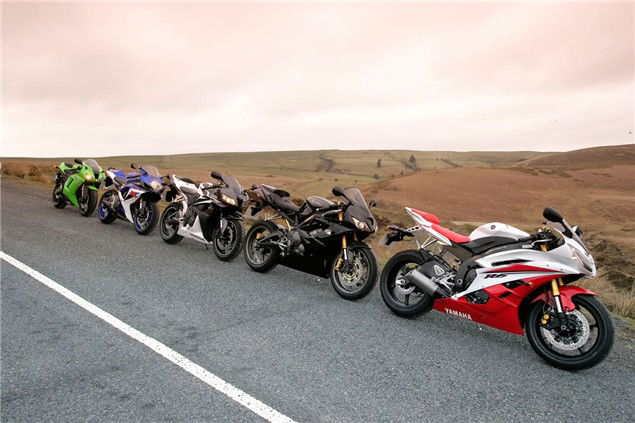
So what do you want in your sports 600?
Do you want a track day missile, focused, sharp, rev-hungry and aggressive? Or a sporty road bike with useful midrange that can cut it on track if the mood takes? This year has seen a definite split in the Japanese 600 supersport camps. Honda, Suzuki, Yamaha and Kawasaki have staked their claim on what they think buyers want and where the market is going.
On one side of the fence you have Suzuki and Honda. There's no doubting either's sporting influence, but in their latest generation of sports 600 both have concentrated on a specific area of their engine's
performance, namely midrange and low-down power.
Last year Suzuki launched its new and improved GSX-R600 with bigger throttle bodies and lightweight engine components, all aimed at giving the engine more grunt. This year Honda has chosen a similar path with its latest version of the CBR600RR.
Since its introduction in 2003 the RR has come under fire for its lack of midrange. The most sporty CBR ever cut it on track, but only as long as you were prepared to bury the tacho needle. Not so for 2007. Lighter pistons and conrods and a bigger airbox give the CBR a much needed midrange boost.
On the other side of the fence Kawasaki and Yamaha have decided the best way to tempt riders is to make their 600s as track focused as possible, which means sky-high rev limits and peak bhp concentrated way up the rev range. At its launch, the designer of the ZX-6R admitted theirs wasn't aimed at road riders, and was instead targeting track day enthusiasts and racers, hence the move back to a 599cc. Thanks to a brand new motor, the power and torque is almost the same as the 636cc engine, he claimed - it was just located a bit closer to the 16,500rpm limit.
Speaking of rev limits, anyone remember Yamaha's claims of a 17,500rpm rev limit when the current R6 was launched last year? That was brushed under the carpet when the rev counter was found to be a bit on the optimistic side. Never mind that, the sales pitch is still the same: 'no compromise' track performance, on the road.
So there you have it. One side of the fence with an eye on the road and a thought of the track; the other with track focus and a nod to the road.
But there's one more sports 600 (of sorts) that's sat firmly on the fence. Triumph's 675 is Hinckley's sportiest yet, but with a 675cc three-cylinder motor it offers something very different to the Japanese inline fours. The triple gives much more midrange at the expense of outright top end performance, but with its oddball capacity is the Triumph track or road focused? Handling and styling say track, engine says road.
So with all this in mind the only way to test the latest generation of sports 600s was to ride them in every environment. As well as letting Niall do what Niall does best and thrash them round a track, we took them to Wales for a ride on some of the UK's best bends then finally used them every day as commuters, battling rush hour traffic and the congested motorways of London and the south east to see how they fared in the real world. Will any of the five straddle the boundaries of performance and usefulness, or is the sports 600 class now so specialised that your choice of bike is governed by the type of riding you do? Ooh, let's find out.
